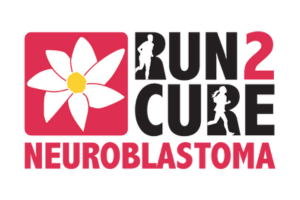Karina’s husband, former wicket keeper in the Australian cricket team, Brad Haddin, had left for a tour of the West Indies two weeks earlier and Karina was caring for both Mia and Mia’s older brother Zachary – then three and a half years old. On top of that, Karina was 30 weeks pregnant with their third child.
Within six hours of the GP’s visit that day, Mia had undergone blood tests and an ultrasound, which identified a tumour on her right kidney. It was pushing on her liver and up against her lungs, and as she had low haemoglobin levels, she required a blood transfusion that evening.
Karina called Brad at what was 6am West Indies time to inform him that their precious daughter had cancer. He immediately relinquished his hard-earned cricket role, packed up and flew back across the globe to be with the family.
Mia was assigned an oncologist who suggested that while many signs pointed to her disease being a Wilm’s Tumour there was a possibility it might be a more aggressive type of cancer called Neuroblastoma.
We had well and truly fallen down the rabbit hole. Still in shock at the news that my child had cancer, I now found myself hoping and praying that it was the “good” kind - Mum, Karina
When Brad finally made it home after many flight connections, his relief at being by Mia’s side was tempered with a sense of helplessness as he and Karina sat in the hospital ward without any further action. The doctors explained that it would take another 36 hours at least before more scans could take place.
Over six days, still without diagnosis, Mia was given a central line, CT and MIBG scans, biopsies, aspirations and more blood transfusions. Finally, the oncologist delivered the news that Mia did have neuroblastoma and it had metastasised to her shoulders, hips, knees and leg bones. Stage 4 with an MYCN gene – the most advanced stage with the lowest survival rate. To give her any chance of beating the cancer she would need the most aggressive response possible. That meant high dose chemotherapy, surgery, a bone marrow transplant, radiation therapy and immunotherapy – a grueling 14 months of treatment.
Brad was told by the oncologist, “You have a child with cancer. You’re no longer a normal family. There is no such thing as a ‘normal’ day anymore.”
Sure enough, on day seven in the hospital, a CT scan under general anesthetic revealed internal bleeding and Mia underwent urgent and unexpected surgery, which saved her life.
Many things were hard to deal with in our new reality, but the worst thing was seeing Mia in terrible pain and discomfort and not being able to help her. At least when she was asleep she looked serene, as though she wasn’t suffering. It was incredible how tough and stoic she was. She wasn’t even 18 months so she had no idea that her life was at stake or any concept of time. We could only hope that if she endured some very hard months, now she would have many, many years of life in the future. - Mum, Karina
During her treatment Mia was diagnosed with metastatic fractures of her humerus, hip and tibia and had to be confined to her cot. It was expected that she would walk with a limp, and possibly even spend a couple of years in a wheelchair.
She underwent six-hour surgery to remove her tumour, right kidney and adrenal gland and later contracted a sepsis infection, spending four days in the ICU.
Throughout all this, Karina credits hers and Brad’s parents for keeping some semblance of routine up for Zac and newborn, Hugo (who was born two months into Mia's treatment) for allowing Brad to return to work so that the family could maintain an income.
Mia is now a confident nine-year-old girl, with the only reminders of her ordeal being hearing aids and a large abdominal scar. The Haddin family and extended network have collectively raised more than $50,000 dollars for neuroblastoma research and every year they take part in the Run2Cure Neurobalstoma. This year Mia will even announce the start of one of the races.
